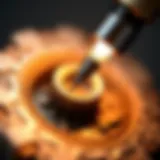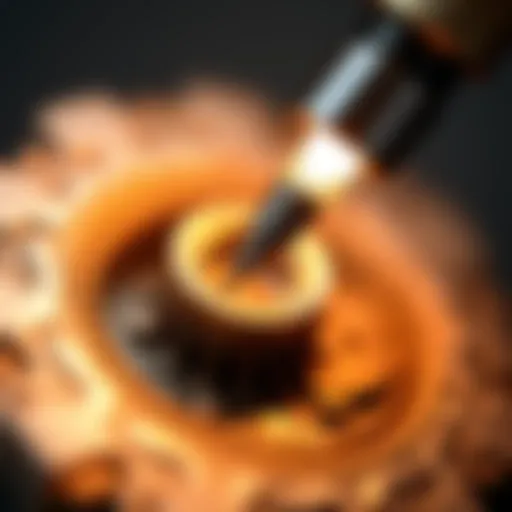Exploring the Intriguing Market of Bird Fossils
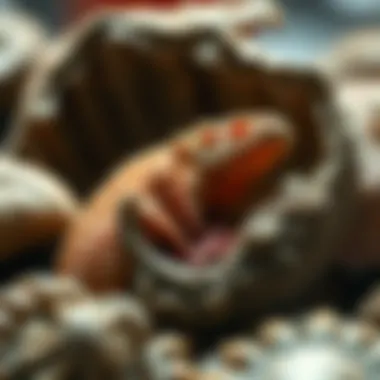
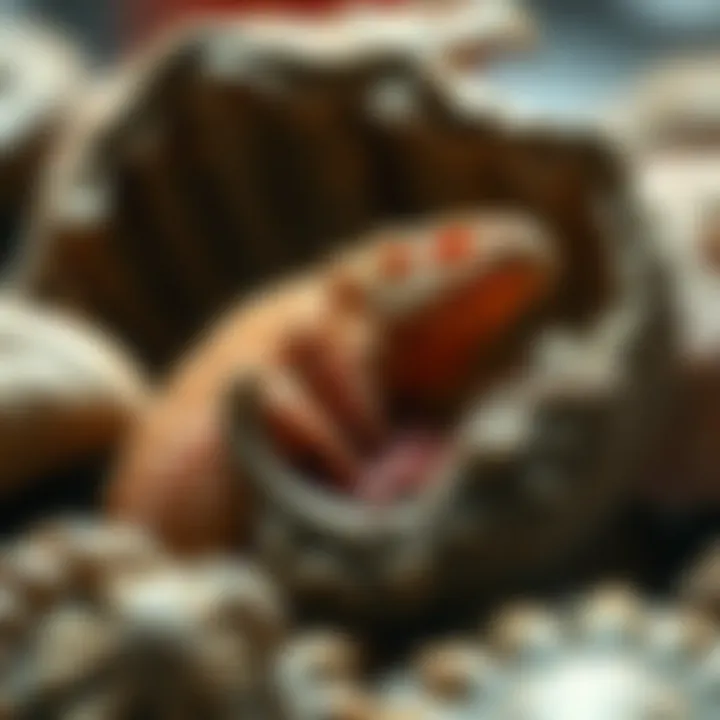
Intro
Bird fossils, a treasure trove of information about our planet's past, provide a unique window into the evolution of avian species. Through their study, paleontologists unlock secrets of how birds adapted to changing environments and diversified over millions of years. With the rise of fossil collecting as a hobby, the market for bird fossils has blossomed. This article aims to guide prospective buyers and enthusiasts in understanding the complexities surrounding bird fossils, from their historical importance to modern collecting practices and ethical considerations.
Overview of the Topic
Definition of Key Terms
When diving into the realm of bird fossils, certain terms come into play that are vital for comprehending the landscape. "Fossilization" refers to the process through which organic material transforms into rock-like structures over time. In this context, it pertains to the remains or traces of ancient birds preserved in sedimentary rocks. "Paleontology" is the scientific study of these fossils, revealing insights into life forms that once existed on Earth.
Historical Significance
Bird fossils have a rich history that dates back to the early days of paleontology. The first major discovery, an early form of the Archaeopteryx in the 19th century, sparked discussions on the link between dinosaurs and modern birds. Over decades, various excavations around the globe have unveiled astonishing specimens, ranging from small, feathered dinosaurs to large prehistoric birds, contributing significantly to our understanding of avian evolution. The significance of these finds extends beyond academic circles; they foster a deep fascination among collectors and enthusiasts alike.
Types of Collectibles
Classification of Different Collectibles
Not all bird fossils are created equal, and they can be categorized based on various factors, including age, geographic origin, and condition. Some of the most sought-after types include:
- Complete skeletons: These are often the centerpieces of collections, as they showcase a comprehensive view of the bird's anatomy.
- Feathers and impressions: Fossilized feathers can provide crucial evidence about the coloration and habitat of ancient birds.
- Eggs and nesting sites: These artifacts offer insights into reproductive habits and parental care.
Notable Categories
Various bird fossils have separate levels of desirability based on their rarity and historical significance. Notable categories include:
- Dodo fossils: Once common, these relics are now scarce, making them highly valuable to collectors.
- Moa specimens: The flightless birds of New Zealand remain popular due to their historical intrigue and size.
- Amber-preserved specimens: Fossils trapped in amber can capture unique moments in time, from insects to feathers.
Ultimately, understanding the various categories of bird fossils and their significance is key for any collector or enthusiast. Moreover, engaging with the relevant literature and research can provide deeper insights—sources like Britannica and Wikipedia are excellent places to start.
Prelims to Bird Fossils
Bird fossils are much more than mere remnants of long-gone creatures; they act as vital keys unlocking understandings of the past. The world of bird fossils is intricate, encompassing various species that span millions of years. They serve as evidence of evolutionary processes, behavior, and environmental adaptations of avian life throughout ages. For collectors and paleo-enthusiasts, these fossils present a chance to own a slice of history that reflects the dynamic journey of birds from their ancient ancestors to their present forms.
Definition and Characteristics
Bird fossils, at their core, are the preserved remains or traces of birds from different geological times. These can range from complete skeletons to singular feathers, eggs, and even footprints. A standout characteristic of bird fossils is their varied condition. Fossils may be beautifully preserved, showcasing intricate feather structures, or they may exist as mere impressions in rock, hinting at what once was. The anatomy of bird fossils often reveals unique features; for instance, the lightweight bones that allowed these creatures to soar through ancient skies. Identifying these characteristics helps paleontologists in classifying species and understanding their morphology.
Among bird fossils, the three main categories include skeletal remains, which can reveal information about size and morphology; trackways, helping to understand the behavior and movement; and eggs, which provide insights into reproductive strategies. The rarity of certain fossils can significantly enhance their desirability and value, turning them into treasured finds for collectors.
Importance in Paleontology
The importance of bird fossils in paleontology is immense. They serve as vital evidence in piecing together the evolutionary puzzle of avian life. By studying bird fossils, scientists can trace the lineage of modern birds back to their dinosaur relatives. Furthermore, these fossils provide insight into ancient ecosystems, which can inform us about climate change, biodiversity, and extinction events.
Collectively, bird fossils not only document what these creatures looked like but also how they interacted with their environments. They reflect changes over time—how adaptations like flight developed, or how certain species thrived while others became extinct. Furthermore, fossils contribute significantly to discussions on conservation by highlighting past climate conditions and species responses to changes in their habitats.
"Bird fossils are like time capsules, holding evidence of evolution and the environment, bridging gaps in our understanding of life on Earth."
Historical Context of Bird Fossil Discoveries
Understanding the historical context of bird fossil discoveries is pivotal in grasping the breadth and depth of avian evolution. This context not only illuminates the paths taken by paleontologists but also showcases how societal and scientific shifts have influenced our knowledge. Bird fossils serve as a rich narrative tapestry, detailing the story of life on Earth and adapting through epochs. By exploring early discoveries and significant sites, we can appreciate the foundations of the contemporary field of paleontology.
Early Discoveries and Contributions
The story of bird fossils often starts with the famous Archaeopteryx, unearthed in Germany during the mid-19th century. This key discovery showcased the critical connection between reptiles and birds, establishing what many consider the missing link in evolution. Early explorers and geologists like Richard Owen and Hermann von Meyer played significant roles in bringing these wonders to light. Their meticulous work fueled a budding interest in paleontology, allowing others like Edward Cope and Othniel Marsh to pursue their own findings passionately. Over the years, these early contributions laid a robust foundation, not just for the study of bird fossils, but for the entire field of paleontological research.
Significant Fossil Sites
The fossil sites rich in bird remains do not merely serve as locations for excavation; they tell stories that span millennia. Three sites, in particular, have been monumental in advancing our understanding of avian history.
The Late Cretaceous of North America
The Late Cretaceous period in North America is a treasure trove for bird fossil enthusiasts. Sites like the Hell Creek Formation spotlight a variety of species, highlighting the diversification and adaptations of birds before the mass extinction event. The key characteristic of these fossils is the remarkable preservation state; many exhibit intricate details like feather imprints that give insight into how early birds may have looked. This makes such fossils a sought-after choice for collectors.
Moreover, the unique feature of the Late Cretaceous deposits is their capacity to reveal transitional fossils, helping scientists piece together the evolutionary puzzle. However, these fossils can be challenging to access, given the legal protections surrounding them, which might deter some collectors. Nevertheless, their significant educational and scientific value makes them a desirable choice.
The Eocene of Europe
Moving to the Eocene epoch in Europe reveals another rich chapter of avian history. Sites in places like Germany and France have produced exceptional bird fossils that date back over 50 million years. A major appeal is the insight these fossils provide into early bird behavior and environment, showcasing diverse species that thrived in ancient woodlands and wetlands.
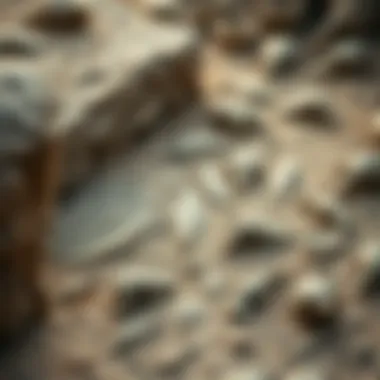

These fossils often feature remarkable detail, featuring structures like beaks and talons that provide hints about their habits and diets. A fascinating aspect of these fossils is their overall diversity, offering collectors a broader spectrum to explore. However, like many fossil sites, the challenge of provenance and authenticity can loom large, demanding diligence from collectors.
The Miocene of South America
The Miocene epoch in South America presents another significant layer in the narrative of bird fossils. Sites such as the Santa Cruz formation yield an impressive array of bird species, including large flightless birds. This period is vital for examining how avian life adapted to shifting climates and diverse ecosystems.
A standout characteristic of these fossils is their contribution to understanding the evolution of modern bird families. Some fossils showcase unique anatomical features that are prevalent in today's species, strengthening their appeal for both collectors and researchers. However, accessing these sites can also be fraught with hurdles; restrictions on collection can limit opportunities for discovery. Collectors, therefore, must tread lightly, emphasizing responsible practices.
"Historical contexts of bird fossils serve as a compass, directing us toward a deeper understanding of evolutionary biology and the rich history of life."
Through an analysis of significant fossil sites and early discoveries, one can see how these contributions have woven a rich tapestry of knowledge. They have not just shaped scientific thought, but also created a thriving culture of collectors dedicated to preserving these ancient narratives. As society continues to change, so too will our approaches to studying and conserving these remarkable remnants of the past.
Methods of Excavation and Preservation
Understanding the methods of excavation and preservation is paramount for anyone venturing into the realm of bird fossils. Proper techniques not only maximize the chances of discovering valuable specimens but also play a critical role in maintaining their integrity for future generations. This section will delve into essential aspects of these methods, explaining how they contribute to both scientific knowledge and the collector's experience.
Field Collection Techniques
Field collection techniques are the backbone of fossil excavation. When out in the field, a fossil collector must arm themselves not just with tools but with knowledge about the geological context where they are searching. Often, the best sites for bird fossils can be found in sedimentary rocks, particularly in regions known for their rich fossil beds like the Hell Creek Formation in Montana or the Late Cretaceous deposits found in states like Kansas.
A few notable techniques include:
- Surface Sampling: This involves looking for fossils that are exposed on the ground or near eroding cliffs. It requires a keen eye and a solid understanding of the area’s geology.
- Stratigraphic Excavation: Knowing the rock layers can greatly enhance the chances of finding well-preserved fossils. By excavating carefully through layers, one can find specimens that retain more information about the bird’s habitat and lifestyle.
- Use of Tools: Basic tools like brushes, picks, and chisels are essential. Additionally, more advanced tools such as pneumatic chisels may facilitate work in harder rock, speeding up the excavation process.
Fieldwork also requires respecting the land and legal boundaries. Collectors should always ensure that they have the permission to excavate and adhere to any regulations that may apply in their area. This contributes to the preservation of both the fossils and their surroundings, ensuring future generations can enjoy their history.
Laboratory Preservation Methods
Once a fossil is collected, the next step is preservation. This is where the labor and patience truly shine. Laboratory preservation methods are not merely about keeping fossils in good condition; they also involve scientific techniques that enhance our understanding of the past.
Key methods include:
- Cleaning and Preparation: This typically involves removing any matrix or rock that is still attached to the fossil. Proper cleaning methods depend on the fossil's material; softer fossils may need gentle brushing, while harder materials may require more aggressive cleaning techniques.
- Stabilization: Many fossils, especially those that are brittle, require stabilization treatment to ensure that they don’t crumble further. This often involves using adhesives that are compatible with the fossil material.
- Mounting and Display: Once stabilized, fossils may need to be mounted for display. This requires careful consideration of the mounting materials, as inappropriate substances can lead to deterioration over time. Using acid-free materials often ensures longevity.
In short, the fate of a fossil is often determined in the laboratory as much as in the field. Getting this part right can mean the difference between a lost piece of natural history and a prized exhibit.
Both excavation and preservation processes highlight the importance of being meticulous and ethical in fossil collection. Understanding the methods can empower both new collectors and seasoned enthusiasts to make informed, responsible decisions about their practices in the world of bird fossils.
For more thorough guidelines and resources, one might refer to websites such as Paleontological Society or education-focused platforms like Smithsonian Education to continually update their knowledge about best practices.
In summary, employing effective excavation and preservation techniques is vital for collecting bird fossils, allowing them to be appreciated and studied for years to come.
After all, these remnants of history tell stories that link our present to a distant past.
Evaluating the Market for Bird Fossils
In the realm of paleontology and fossil collecting, understanding the market for bird fossils is akin to holding a compass in uncharted waters. This knowledge not only helps collectors make wise investments but also sheds light on the intricate dynamics that shape the value of these ancient relics. By assessing market trends and identifying influencing factors, enthusiasts can navigate their acquisitions with confidence and discernment.
Factors Influencing Market Value
Rarity and Condition
Rarity and condition are at the forefront of any discussion about the market value of bird fossils. Rare specimens, especially those in excellent condition, hold significant appeal among collectors. A fossil that is scarce serves as both a conversation starter and a centerpiece in a collection. For instance, a well-preserved Ichthyornis, a primitive bird from the Late Cretaceous period, fetches a premium because of its limited availability and the exceptional state of preservation.
The primary characteristic of rarity is that it piques interest; collectors are often willing to pay top dollar for something they know will be hard to find again. The condition of the fossil further influences desirability. A fossil that is intact and displays minimal wear and tear can command much higher prices than one that has cracks or missing chunks.
In this market, buyers should also weigh the condition against their personal collecting goals. For some, a slightly damaged fossil that tells a story of its journey may be just as appealing as a pristine specimen. Collectors often wrestle with these nuances, aiming for a balance between rarity and condition while considering their budget and collecting aesthetic.
Provenance and Authentication
Provenance and authentication are critical considerations that can either justify a steep price or sink a potential sale. Provenance refers to the history of the fossil—where it originated, who collected it, and the path it has taken to reach the market. A clear provenance often assures buyers of the fossil's legitimacy and can increase its appeal. For example, fossils sourced from reputable sites, such as the Green River Formation in Wyoming, carry weight because they come from scientifically recognized locations.
Authentication, on the other hand, is the process by which experts confirm the identity and age of the fossil. This adds another layer of trust within the market. Authenticating a fossil can sometimes be a lengthy procedure, involving the assessment of its physical characteristics and possibly technological analysis such as carbon dating.
The downside is that the verification process can create barriers for new collectors or those on a tight budget. The costs involved in authenticating a specimen may deter some. However, for serious collectors, investing in authentication is essential; it not only protects their investment but also enhances the overall credibility of their collection.
Current Trends in Collecting
As the landscape of fossil collecting evolves, new trends surface, influenced by advances in technology and shifts in collector interests. One growing trend is the increasing value placed on unique and scientifically significant specimens. Collectors are now nudging away from the more common fossil types, looking instead for pieces that come with an interesting narrative or unique attributes.
Moreover, online platforms have gained traction, allowing collectors to explore options beyond their immediate geographical regions. Websites like eBay and specialized fossil trading forums have democratized access, allowing both seasoned and novice collectors a chance to connect with sellers globally. It’s imperative, though, for buyers to exercise caution when purchasing online; verifying the trustworthiness of sellers and the credibility of the fossils is vital.


Ethics in Fossil Collection and Sales
Engaging in the world of fossil collecting brings with it not just the thrill of discovery, but also a moral obligation. The ethical considerations surrounding fossil collection and sales are crucial for fostering a healthy relationship between collectors, researchers, and the environments where these treasures are found. When it comes to bird fossils, understanding the ethics involved is not just about following rules but also about preserving our planet’s rich paleontological history and ensuring that we can pass the legacy of these findings on to future generations.
Legal Frameworks and Regulations
When digging into the ethical side of fossil collection, one must start with the legal aspect. Laws governing fossil collection can vary significantly from one country to another. In the United States, for instance, the Bureau of Land Management (BLM) regulates fossil collection on public land, stating that only small personal collections are allowed without a permit. Additionally, many states have their own laws and regulations regarding fossil rights.
In places like China, the legal landscape is even more restrictive, emphasizing the idea that fossils found in their territory are national treasures. Such legal frameworks serve to protect not only the fossils themselves but also the valuable information they can provide about ancient ecosystems. Additionally, these laws aim to prevent illegal collection and trafficking, ensuring that scientific research can flourish without fear of looting and loss.
In sum, familiarizing oneself with these laws is vital for anyone interested in acquiring bird fossils. Engaging in collections that violate these regulations can result in hefty fines or even imprisonment, ultimately stifling the joy of discovery and learning.
Best Practices for Responsible Collecting
Collecting bird fossils can be a fulfilling hobby, but it isn't without its responsibilities. Best practices in fossil collecting encompass a range of guidelines that not only protect the fossil but also keep the ecosystem intact.
- Do your Homework: Before heading out on a dig, researching the region can be invaluable. Understanding the local laws ensures compliance, while also deepening one's appreciation for what can be found.
- Seek Permission: Whether you're on private property or a public site, obtaining the necessary permissions is a non-negotiable rule. Trespassing is not only illegal; it can set a negative precedent for all collectors.
- Minimize Impact: Always leave the site as you found it. Fossil collecting should never turn into vandalism. When excavating, take only what is justified and document the location and context, as this information contributes to future research.
- Keep Records: Maintaining detailed records of where and how fossils were obtained helps establish provenance, which is critical for both legal and ethical collecting. This history is invaluable, as it can unlock insights into the fossils’ significance and authenticity.
- Educate Others: Advocacy for responsible collecting practices goes a long way. Share knowledge with fellow collectors and newcomers to encourage a community that respects both the thrill and the responsibility of fossil collecting.
Finding Reputable Sellers
Identifying trustworthy sources in the bird fossil market is crucial for anyone looking to expand their collection. Crafting a positive relationship with reputable sellers is helpful for a smooth acquisition process and for ensuring that the fossils one buys are authentic and well-preserved. In this vibrant world of fossil dealing, knowing whom to trust can mean the difference between securing a breathtaking specimen or being duped by a clever counterfeit.
While the market for bird fossils is expanding rapidly, it’s essential to conduct due diligence. Benefits of finding reputable sellers include not just peace of mind but also potential access to high-quality fossils and expert knowledge. Reputable sellers often share insights about each specimen, its origin, and its significance, which deepens collectors’ appreciation of their acquisitions.
Online Platforms for Fossil Sales
The internet has revolutionized the way fossils are bought and sold. Numerous online platforms cater specifically to fossil enthusiasts. Websites like eBay, FossilEra, and even specialized forums on Reddit can serve as valuable resources for bird fossil collectors. However, navigating these options requires care.
When using online platforms:
- Research the seller: Always check seller ratings and reviews. Look for feedback from previous buyers and any red flags, such as complaints about quality or authenticity.
- Ask questions: Don’t hesitate to reach out to sellers with any queries about the fossils. A trustworthy seller will happily provide extra information.
- Avoid impulse buys: Take your time. The rush to secure a fossil can cloud judgment and lead to regrets later on.
In particular, be wary of listings that are too good to be true; they often are.
Auctions and Fossil Shows
Participating in auctions or attending fossil shows offers an exciting alternative to online buying. Live auctions often provide a unique opportunity to see fossils in person before bidding, which is invaluable for assessing their condition and authenticity. Moreover, engaging with experts and fellow collectors can lead to fruitful discussions about the specimens on offer.
Fossil shows, like the Tucson Gem and Mineral Show, feature vendors from all over who showcase their finest finds. Attending these events grants collectors a chance to:
- Network: Building connections in the community can lead to future opportunities and insider tips on rare specimens.
- Educate themselves: Many shows include talks or presentations from experts about fossil identification, preservation, and the latest adventures in paleontology.
- Authenticate purchases on the spot: Being present allows collectors to examine fossils closely, reducing the risk of fraud.
In summary, navigating the world of bird fossils requires a keen eye and a cautious approach. By knowing where to look and being aware of the best practices for acquiring fossils, collectors can make informed choices that enhance their collections without falling into the traps set by less scrupulous dealers.
Tips for New Collectors
Entering the world of bird fossil collecting can be a thrilling journey. New collectors often find themselves dazzled not only by the beauty of the specimens but also by the sheer complexity of the market. This section aims to anchor aspiring collectors, guiding them on how to navigate this intricate landscape. Understanding the nuances of this hobby can significantly enhance one’s experience, transforming it from mere curiosity to an informed pursuit.
Researching Fossil Types
Before jumping into the buying fray, it’s paramount for new collectors to thoroughly research fossil types. Familiarity with different bird fossil species is crucial. Are you looking for a well-preserved Archaeopteryx or perhaps a splendid specimen of Hesperornis? Knowing the distinctive features and historical context of various species will equip you to make smarter choices.
Some tips for effective research include:
- Visit museums: Museums often showcase impressive fossil collections. Take your time to observe the details and ask curators questions. They can provide insights that no textbook can.
- Read up: Books and academic journals focused on paleontology can enrich your understanding of bird evolution and fossilization. Websites like Britannica have valuable resources too.
- Join forums: Engaging with the community through platforms like Reddit can lead to fruitful discussions. Experienced collectors often share tips, warnings about fakes, and even sources for buying.
Researching isn't just beneficial; it’s essential. A solid foundation allows you to discern quality from kitsch, making it easier to avoid pitfalls.
Building a Diverse Collection
When it comes to building a diverse collection, variety is the spice of life. New collectors might be tempted to focus solely on flashy specimens; however, diversity can lend depth to your collection that reflects a broader understanding of avian history.
Here are some suggestions for achieving this:
- Mix geographical origins: Don’t be solely focused on local finds. Fossils from different regions can provide a kaleidoscope of bird history. For instance, bird fossils from North America differ significantly from those found in Europe or South America. Each region tells a unique story of avian evolution influenced by environmental changes.
- Include various periods: Aim to include fossils from different geological periods. This not only makes your collection more interesting but also presents an opportunity to see how avian species adapted over time. Consider adding specimens from the Late Cretaceous, Eocene, and Miocene to your repertoire.
- Invest in replicas: Not every piece needs to be a fossil; high-quality replicas can fill gaps and offer educational insights. They allow you to own some unique pieces without breaking the bank.
Building a diverse collection takes time, patience, and a discerning eye, but the journey enriches not only the collector's experience but also serves educational purposes by showcasing avian diversity through the ages.
"The joy of collecting is not just in acquiring but in understanding the stories that each piece tells."
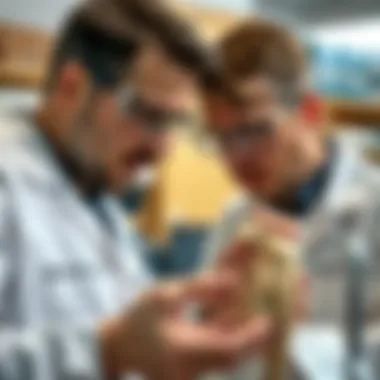
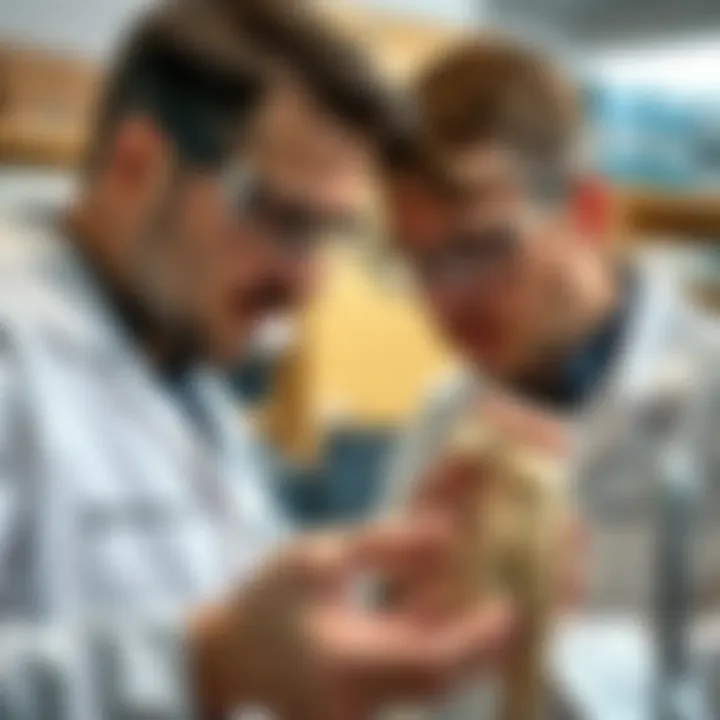
Fossils are more than mere chunks of rock; they are windows into the past, echoing tales of creatures that once soared through ancient skies. Taking the time to research and strategically build your collection will reward you tenfold in knowledge and appreciation.
Educational Value of Bird Fossils
Bird fossils are not just relics of the past; they serve as windows into the evolutionary narrative of life on Earth. Their educational potential is immense, allowing both novice and seasoned paleontologists, as well as the general public, to glean insights into biodiversity, ecology, and the intricate tapestry of time. When incorporated into educational settings, they enrich the curriculum and foster a deeper appreciation for natural history. Here’s a closer look at why bird fossils matter educationally:
Fossils in the Classroom
Integrating bird fossils into classroom learning can ignite curiosity among students. They offer tangible connections to the scientific concepts being taught. By examining these fossils, students can:
- Understand Evolutionary Processes: Understanding how ancient bird species relate to modern birds demonstrates the principle of evolution. It brings to life Charles Darwin's theory, showing adaptation and speciation over millions of years.
- Engage in Hands-On Learning: Students can participate in fossil replication projects, using clay or plaster materials to create their own models. This hands-on approach encourages imaginative play while reinforcing scientific concepts.
- Explore Paleoenvironments: Bird fossils can tell us much about the ecosystems in which these birds lived. By analyzing the types of vegetation or sedimentary layers where fossils are found, students learn about historic climates and ecological shifts.
Utilizing bird fossils in educational settings helps develop critical thinking and observational skills. Students become investigators, piecing together the life's puzzle through classifications and analysis.
Public Exhibitions and Outreach
Public exhibitions featuring bird fossils play a pivotal role in community education and outreach. Museums and science centers often curate exhibits that draw in audiences from various backgrounds. These exhibitions not only showcase stunning specimens but also facilitate learning through interactive displays and guided tours.
Engaging the public is vital for fostering an interest in paleontology. Here are some crucial benefits of such outreach initiatives:
- Raising Awareness: Exhibits can raise awareness of bird conservation issues while simultaneously emphasizing the importance of studying their prehistoric counterparts.
- Interactive Learning Experiences: Live demonstrations and workshops offer hands-on experiences, allowing visitors to examine replicas or actual fossils, how they are excavated and preserved.
- Fostering Community Engagement: Programs might include lectures from paleontologists, offering insights into current research and discoveries, thus bridging the gap between academia and the public.
Technological Advancements in Fossil Research
In recent years, the realm of fossil research has leapt forward, embracing new technologies that have transformed how we study and understand bird fossils. These advancements not only sharpen our insights into avian evolution but also improve the accuracy of fossil identification and preservation. Technologies such as imaging techniques and genetic analysis herald a new era in paleontology, where findings can be made with enhanced precision and depth.
Utilization of Imaging Techniques
Imaging technologies, including computed tomography (CT) scanning and 3D modeling, have changed the game when it comes to examining fossils. Traditional methods of excavation and analysis often risk damaging delicate specimens. With CT scanning, researchers can visualize the intricate structures within fossils without having to physically open them up.
Imagine unearthing a bird fossil encased in rock. Instead of chiseling away at it, a non-invasive CT scan reveals the fossil's internal details in stunning clarity. This opens the door to a better understanding of the bird's anatomy and any unique features it may possess.
- Benefits of Imaging Techniques:
- Non-destructive analysis allows for preservation of the specimen.
- Detailed visualizations can assist in understanding evolutionary traits.
- 3D models can be easily shared for educational purposes or future research.
"For paleontologists, these imaging techniques are akin to having x-ray vision, allowing them to peer into the past without harming the fragile remains of ancient creatures."
Armed with these advanced imaging tools, researchers can more effectively analyze fossils, significantly pushing the boundaries of what we know about avian history and development.
Genetic Analysis in Paleontology
Genetic analysis is yet another feather in the cap for fossil research. Although bird fossils primarily consist of mineralized remains, advances in molecular biology have enabled paleontologists to extract and analyze ancient DNA from certain specimens. This genetic information can provide clues not just about the species in question, but also about its phylogenetic relationships and even how it adapted to different environmental pressures over time.
- Key Points in Genetic Analysis:
- Helps establish evolutionary connections between extinct and extant species.
- Can reveal insights into migration patterns and habitat preferences.
- Identifies potential behaviors or adaptations that were vital for survival.
These advancements hold the potential for revolutionary insights into bird evolution, knitting together the threads that link ancient species with their modern descendants. Genetic analysis is not without challenges, particularly regarding contamination and decay, but its implications are profound and far-reaching.
As we continue down the path of technological advancements, the future of bird fossil research looks brighter than ever. It’s an exciting time for scientists and collectors alike, as these innovations can deepen our appreciation for the incredible history encapsulated within each specimen.
Future of Bird Fossil Collecting
The future of bird fossil collecting stands at an intriguing crossroads, marked by advancements in technology and a growing awareness of ethical considerations. As the interest in paleontology and fossil collection continues to thrive, it is crucial to examine the evolving landscape of this passionate pursuit. The importance of this topic cannot be overstated; understanding the future trends ensures that both newcomers and seasoned collectors can navigate the intricate world of bird fossils responsibly and knowledgeably.
Emerging Trends in Acquisition
In recent years, there have been notable shifts in how collectors acquire bird fossils. Online platforms have gained significant traction, allowing enthusiasts to connect with reputable sellers across the globe. Platforms like eBay, Etsy, and specialized fossil forums have made it easier for collectors to find unique specimens without geographical limitations. However, this convenience comes with its own set of challenges.
The authenticity and provenance of fossils remain paramount. With a wider array of sellers, it’s vital for collectors to do their homework. Researching and verifying the origin of a fossil can save potential buyers from scams. In addition, many established dealers now provide scientific backing for their specimens, enhancing their credibility and trustworthiness.
- Use of Social Media: Platforms like Instagram and Facebook are changing the way fossils are marketed and sold. Collectors share their finds, while sellers promote unique items through visual content, creating an engaging community around bird fossil collecting.
- Emergence of Mobile Apps: New mobile apps designed for collectors simplify the process of documenting and managing collections, allowing users to track inventory and even share their collections with other enthusiasts.
Collectors are also increasingly paying attention to the story behind each specimen. Fossils that come with detailed geological provenance or historical significance tend to capture greater interest. Such narratives not only enhance the aesthetic value but also the educational importance of the fossils.
Conservation Responses in Fossil Collecting
With the rise in collecting activity, conservation has become a key consideration in the future of bird fossils. The ecological footprint associated with fossil collection is stirring a conversation about sustainable practices. Fossil collectors and paleontologists recognize the need to balance their passion with the preservation of habitats and geological sites.
Various organizations are advocating for responsible collecting practices. Some notable responses include:
- Legal Protection: Certain fossil-rich sites now have legal protections that prohibit unauthorized collection, reinforcing the need for collectors to adhere to regulations.
- Collaborative Efforts: Partnerships between collectors and local governments or conservation groups help raise awareness about the importance of protecting fossil sites. Educational programs may focus on fostering understanding of the delicate balance between collecting and conservation.
- Ethical Collecting Guidelines: Numerous fossil associations are working on establishing clearer guidelines for what constitutes ethical collecting. Collectors are encouraged to seek fossil specimens that have been legally and responsibly sourced.
As the future unfolds, it becomes evident that fostering a culture of respect towards both fossils and their habitats is essential for sustainable collecting practices. Collectors must be stewards of the natural world, allowing future generations to appreciate the rich history encapsulated in bird fossils.
In summary, the journey into the future of bird fossil collecting promises challenges and opportunities alike. By remaining informed about emerging trends and supporting conservation efforts, collectors can ensure that their passion for bird fossils does not come at the expense of the natural history they cherish.












